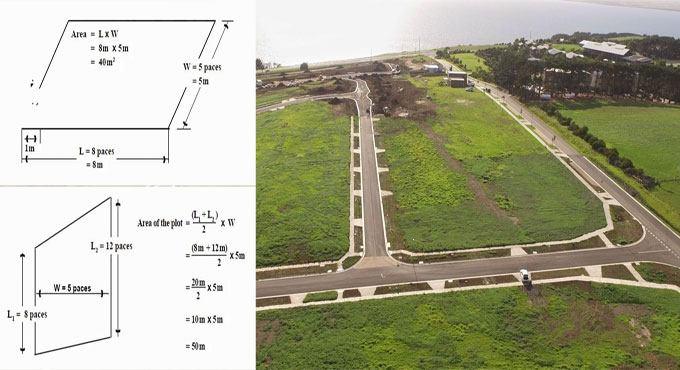
How to measure the size of any plot
The process is simple to measure the size of any plot. Given below, some useful tricks for measurements.
The size of any land is essential to provide manure (or chemical fertiliser) at the right rate.
Initially, pace the length (L) and width (W) of the land, and note down the number of paces in each. Suppose, each pace is approximately 1m. Now, the number of paces for the length should be multiplied with the number of paces for the width.
Thus, the area in square metres (m2) will be determined.
Now, the number of paces for the length should be multiplied with the number of paces for the width to obtain the area in square metres (m2).
It ensures that the plot is in rectangular or square shape. If it contains constant length but dissimilar width, or constant width but dissimilar length, then a marginally different method should be employed to determine the area.
Under this situation, calculate the width (W) of the land by pacing across it at a right angle (90?). Then, find out the length (L) by pacing along the length of the plot on both sides. It will provide two plot lengths.
Assume, L1 ? 8 paces and L2 ? 12 paces.
Now, the average length of the plot will be computed by dividing the total of L1 and L2 by 2 i.e. 8m + 12m ? 2 = 10m.
To work out the area, multiply this average length (10m) with the width (5m) i.e. 10m x 5m = 50m2.
The same method can be used where the length is constant but the width fluctuates. Calculate the length, then obtain two measures of the width, W1 + W2, and perform the estimation.
To change the area of any land to hectares (ha), the area in square metres should be divided with 10 000. In this case, it will become 50m2 ? 10 000 = 0,005ha.


